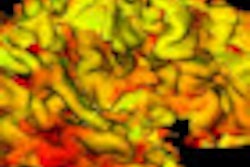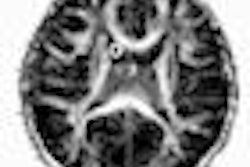A new study used MRI to discover that toddlers with autism appear more likely to have an enlarged amygdala, a portion of the brain that processes facial expression and alerts the cortical area to the emotional significance of events.
Researchers from the University of North Carolina (UNC) at Chapel Hill compared MRI studies of autistic toddlers with a control group consisting of both normal and developmentally delayed children. They determined that amygdala volume showed bilateral enlargement in children with autism.
The findings are consistent with prior studies evaluating correlations between MRI images, head circumference, and postmortem autopsies. Details of the study were published in the May 2009 issue of the Archives of General Psychiatry (Vol. 66:5, pp. 509-515).
Fifty children diagnosed with autism had an initial brain MRI exam between the ages of 18 and 35 months, and the control group consisted of 22 normal children and 11 developmentally delayed children, matched by sex and age. At 42 to 59 months of age, 31 autistic, 14 normal, and six developmentally delayed children had a second brain MRI. In conjunction with each MRI exam, all of the children were measured for joint attention, a test to determine the extent to which the subject follows another person's gaze to initiate a shared experience.
Developmentally delayed children were included in the control group to more closely match the autism group in terms of IQ, according to principal investigator Matthew Mosconi, Ph.D., and colleagues at the UNC Neurodevelopmental Disorders Research Center.
Compared to the control group, the children with autism were more likely to have amygdala enlargement at ages 2 and 4. Amygdala growth trajectories are accelerated before the age of 2 years in patients with autism, and the amygdala remains enlarged during early childhood, according to the researchers. Amygdala enlargement in autistic 2-year-olds is disproportionate to overall brain enlargement, and remains disproportionate at age 4.
The researchers also associated amygdala volume with an increase in joint attention ability at age 4. These findings suggest that alterations to this brain structure may be associated with a core deficit of autism. Amygdala disturbances early in a child's development disrupt the appropriate assignment of emotional significance to faces and social interaction.
Related Reading
Finger tapping with fMRI reveals autism secrets, April 28, 2009
MEG reveals sound processing delays in autistic children, December 2, 2008
Study maps brain abnormalities in autistic children, November 29, 2007
Studies shed light on autism effects and treatment, December 6, 2006
fMRI helps explain social dysfunction with autism, October 10, 2006
Copyright © 2009 AuntMinnie.com



.fFmgij6Hin.png?auto=compress%2Cformat&fit=crop&h=100&q=70&w=100)




.fFmgij6Hin.png?auto=compress%2Cformat&fit=crop&h=167&q=70&w=250)











